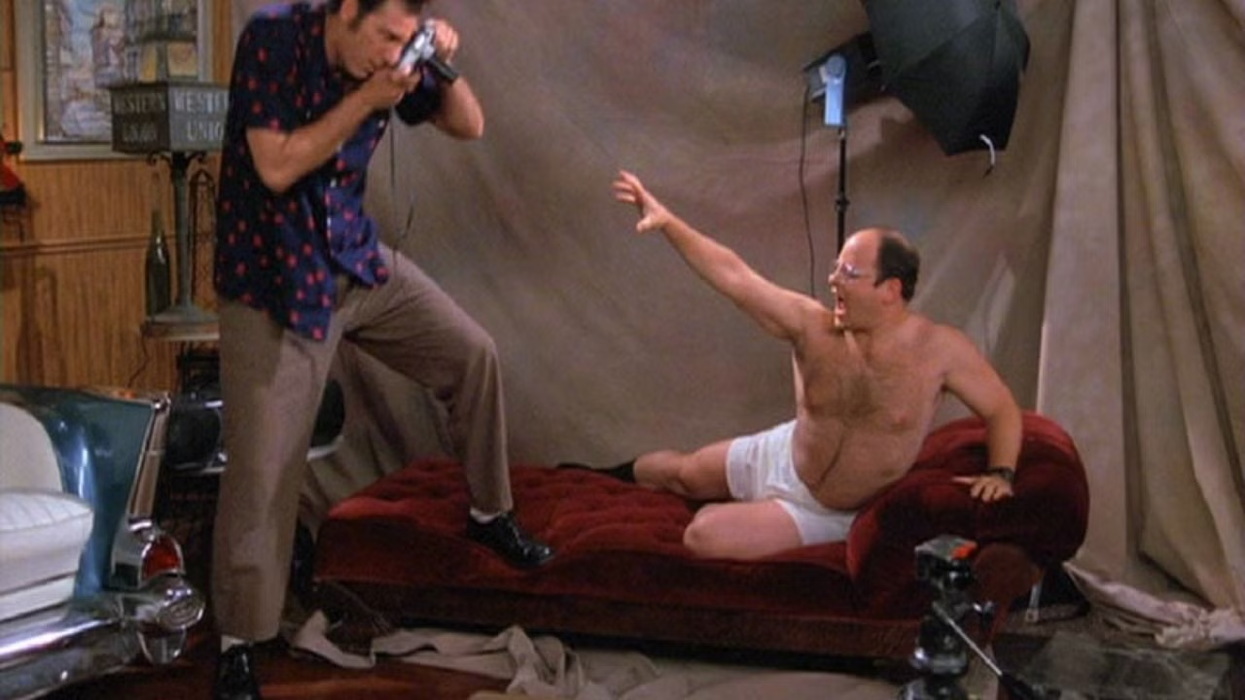How 'Eternal Sunshine' Completely Obliterates Your Expectations of Rom-Coms
More people should be genre-bending romantic comedies with... well, anything, and Eternal Sunshine of the Spotless Mind shows how to do it well.

The romantic comedy genre, like many genres, has tropes that audiences are familiar with: (usually) heterosexual attraction, love at first sight, manic pixie dream girls, and desperate declarations of love before their partner in front of a large crowd of people. It's a worn-out genre, but Michel Gondry's Eternal Sunshine of the Spotless Mind, written by the ever-weird Charlie Kaufman, does it justice.
The film plays with the romantic comedy elements and tropes. The “meet-cute” and the classic archetypes of the main characters are presented to the audience and soon dismantled as the audience figures out that the timeline of the film is nonlinear.
Watch how FilmThought breaks down the brilliance of the film in this video:
The “Meet-Cute”
It’s that moment when a boy meets a girl for the first time, and sparks fly. There is an awkwardness to their conversation to show the butterflies that both characters feel. Then add in the conflict and some witty, back-and-forth banter, and you have the perfect “meet-cute.”
The “meet-cute” in Eternal Sunshine of the Spotless Mind isn’t actually a “meet-cute.” Joel (Jim Carrey) and Clementine (Kate Winslet) have already had a two-year relationship by this point, but the audience doesn’t know this until 20 minutes into the film. This interaction between the couple follows the audience’s general expectations on how the two lovers should meet and interact throughout the rest of the film, but by dismantling that expectation it has already performed, the audience is taken back.
Michel Gondry and Charlie Kaufman understood the “meet-cute” is a necessary element in traditional rom-com films, but they allowed themselves to play with the idea by bending the genre with science-fiction. The “meet-cute” then becomes something else, the idea that fate exists and the people who break our hearts are meant to stay in our lives.

Archetypes of Characters
Eternal Sunshine of the Spotless Mind has the stock characters that audiences are used to. There's the unhappy, lonely man and the quirky, manic pixie dream girl that will come into the man’s life and bring some meaning to it.
Joel fills the male archetype within the first few minutes of the movie by showing his genuine unhappiness with life, and the need for something that seems to be missing. He is reminiscent of Sam Baldwin (Tom Hanks) from Sleepless in Seattle where both men are missing something from their flawed, unlucky lives. It is only discovered later that Joel is unhappy due to the brain damage he received from his procedure. Once it is learned he is not filling the archetype, the audience is allowed to make any judgment on Joel without the film trying to show us that he is like this because he is lonely.
Clementine, unfortunately, follows the trope of the manic pixie dream girl. But, in the film’s defense, the term didn’t exist until a year after the film’s release. Clementine is quirky, with hair color that changes frequently throughout the movie much like Ramona Flowers (Mary Elizabeth Winstead) from Scott Pilgrim vs. The World.
She is someone familiar, the girl that brings light into Joel’s life. Like Joel, the audience can judge Clementine for her actions and not for her role as the savior of the sad man. She is human and makes choices that better her. Audiences sympathize with her and understand where she is coming from because she is relatable.
Kaufman plays with the well-known conventions of romantic comedy and then flips them by taking a deep dive into the human psyche. Joel is missing something that had a major impact on his life. He isn’t trying to find someone to make his life interesting; he is trying to hold onto the person who makes life feel interesting. The romance is already dead. The characters are changing constantly, allowing the film to go wherever it wants as long as it justifies the character’s actions. This is a reverse rom-com, and the audience wasn’t expecting this. It’s not a story about the start of the romance, but the end of one.

Cinematography
The cinematographer also helps establish Joel as the archetypal main male character in rom-com. Gondry amplifies the feeling of loneliness through extreme wide shots to show Joel’s loneliness and isolation before the “meet-cute.” These shots are not only used to show Joel’s mental state but also to establish locations that will be of importance later in the film. The mise-en-scène also helps relate the connection between Joel and Clementine.
Everything that the audience sees at the beginning of the film is manipulated by the audience’s perception and the nonlinear plot. The visual storytelling is both chaotic and well thought out. The audience must keep track of the scenes in the beginning and figure out how those moments came to be.
The imagery is also symbolic. Joel clinging to Clementine on the cracking ice shows us that his memories of her are sinking, no matter how hard he holds onto her.
Unlike Joel, who is forgetting all of his memories, the audience is learning and putting the love story together for themselves. The film refuses to follow the linear timeline of a romantic comedy because it isn’t just romantic comedy; it’s science fiction blended with the rom-com genre.

Eternal Sunshine of the Spotless Mind is so well received because it doesn’t follow the worn-out storyline of a romantic comedy. It lures audiences in with familiarity to engage with the main characters and then changes how the audience should perceive these characters after the first act. Just like Joel, the audience is confused and engaged because they are not encouraged to see any of the characters a certain way.
Subverting genre expectations is a trend that we need more of. How would you subvert the romantic comedy expectation? Let us know in the comments.
Source: Film Thought











